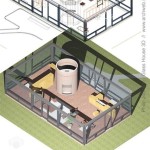The White House Plane Crash: A Historical Perspective
On February 9, 1943, a U.S. Army Air Forces C-54 Skymaster carrying President Franklin D. Roosevelt and his entourage crashed into a coastal lagoon in Bathurst, Gambia, West Africa. The incident, known as the White House Plane Crash, occurred during the president's return flight from the Casablanca Conference, a pivotal meeting between Roosevelt and British Prime Minister Winston Churchill.
The C-54 Skymaster: A Reliable Aircraft
The C-54 Skymaster was a versatile twin-engine transport aircraft developed during World War II. Known for its reliability and durability, the Skymaster was widely used by the U.S. military for transporting troops, cargo, and senior officials. The aircraft Roosevelt was traveling in was designated "Sacred Cow" and specially equipped for presidential use, featuring a communications suite and comfortable seating.
The Flight and the Crash
The "Sacred Cow" took off from Casablanca on February 8, 1943, with Roosevelt and 10 other passengers aboard. The flight proceeded smoothly until it approached Bathurst, where the aircraft encountered heavy clouds and poor visibility. While attempting to land at Bathurst Airport, the Skymaster struck a palm tree and crashed into the lagoon.
Aftermath and Impact
The White House Plane Crash was a tragic event that shook the world. Roosevelt survived the crash with minor injuries, while four other passengers were killed. The incident highlighted the risks associated with presidential travel and led to increased security measures for future flights.
Investigation and Causes
An investigation into the crash revealed that it was caused by a combination of factors, including poor weather conditions, pilot error, and mechanical failure. The pilot, Colonel William Langer, had limited experience flying the Skymaster in darkness and was reportedly fatigued from the long flight. Additionally, the aircraft's landing gear had mechanical issues that might have contributed to the crash.
Legacy and Lessons Learned
The White House Plane Crash left a lasting legacy on presidential travel and aviation safety. It led to the establishment of a dedicated Presidential Airlift Group, which provided secure and reliable transport for the president and other high-ranking officials. The incident also reinforced the importance of thorough pilot training and careful planning for presidential flights.

Stolen Plane Crashes On White House Lawn Abc News

That Time A Plane Crashed Into The White House S Front Yard

Frank Eugene Corder Crashing His Cesna Into White House Grounds History

That Time A Plane Crashed Into The White House S Front Yard

Small Plane Crashes Into House In Florida Neighborhood Iuring 3 Abc News

Cessna Light Aircraft Crashes Into Home In Na Iuring Two Daily Mail

Plane Crash On The White House Lawn 1994

Crash At The White House Overview Unimpeded Intruder Crashes Plane Into New York Times

White House This Day In Aviation

Corder S Cessna 150








